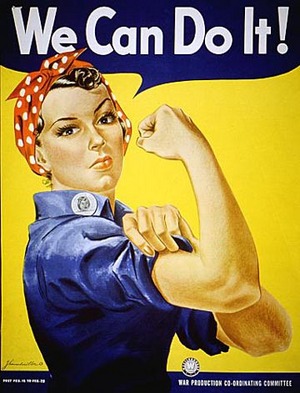Wearing and displaying ribbons of various colors to commemorate loved ones or to identify with a cause is a custom with roots in both popular culture and folk tradition. The first ribbon that seems to have been represented as meaningful in history was the yellow ribbon. While this ribbon was mentioned in a marching song sung by the military in the early 19th century, it wasn’t until the 1970’s that it became a national symbol.
Over the years, wearing specific colors to represent causes and ideas has been quite popular. In fact, a number of old college songs depict women wearing hair ribbons or garters to represent their boyfriends, or even their own college. The color could be varied to indicate an appropriate college: crimson for Harvard, orange for Princeton, etc.
In the early 1970s the song “Tie a Yellow Ribbon ‘Round the Ole Oak Tree” was released, telling the tale of a recently-released prisoner returning home. His sweetheart tied many yellow ribbons around the tree in front of her home to show she still longed for his return. Based on this song Penney Laingen, wife of the U.S. Chargé d’Affaires in Tehran who was then a hostage in Iran, tied yellow ribbons around trees near her home to demonstrate her longing for the safe return of her husband.
Laingen’s friends and family members copied her actions, and the ribbon became a symbol for her cause. On the January 28, 1981 CBS broadcast, Penney was shown outside her home, displaying the ribbons. As the media spread this story, Americans got the message: ribbons could be a very effective means of making people aware of a cause.
And in Laingen’s case it seems to have made a difference because later that month ribbons blossomed all across the United States to welcome the American hostages home from Iran. In the early 1990s, yellow ribbons again became popular symbols of waiting for loved ones to return from the Gulf War.
In May 1986 the AIDS Faith Alliance, held a conference on AIDS in London, and gave rainbow ribbons to everybody attending. In the 1990s, AIDS activists, inspired by the ribbon idea, decided to make their own ribbons to support AIDS sufferers. The ribbon they chose: red, the color of passion. During the Tony awards actor Jeremy Irons wore a bright red ribbon on his chest and made the ribbon popular overnight.
When Susan G. Komen Breast Cancer Foundation wanted to increase awareness of their organization, they chose pink ribbons partly because it is a very feminine shade, and partly because pink is a color often associated with good health (pudgy pink babies, for example).
Wearing ribbons to help raise awareness about a variety of causes then caught hold everywhere. In fact, The New York Times dubbed 1992 “The year of the Ribbon.” Sarah E.H. Moore, in her book, “Ribbon Culture: Charity, Compassion and Public Awareness” (Palgrave Macmillan) notes “the ribbon is a kitsch fashion accessory, as well as an emblem that expresses empathy; it is a symbol that represents awareness, yet requires no knowledge of a cause.
The ribbons are now sold across the world in various styles and forms so people can either celebrate recovery or mourn the loss of a loved one. Creating ribbon angels in stained glass has become a great opportunity for me to meet and help many folks dealing with cancer in their family. You can see some of my creations on my site: www.faithlady.etsy.com
As more and more groups began to claim a specific color for their awareness ribbons, it became a bit confusing. Now it’s difficult to find a comprehensive list of awareness ribbon colors and their meanings, mostly because the ribbons have so many associated meanings. Several groups have attempted to collect as many as possible in one spot.
These 2 links will provide you with a pretty comprehensive list of colors and causes:
http://www.trinitylondon.com/awareness-ribbon-meanings.asp
http://www.thepinpeople.com/custom-awareness-ribbon-pin-colors-and-awareness-ribbon-meanings/
References:
http://www.loc.gov/folklife/ribbons/index.html
http://www.loc.gov/folklife/ribbons/ribbons_81.html
http://www.myplainview.com/lifestyles/article_12637606-d54d-11df-885f-001cc4c03286.html
http://www.mercurynews.com/bay-area-living/ci_16290524?nclick_check=1
http://www.chron.com/disp/story.mpl/life/main/7235037.html
http://www.myplainview.com/lifestyles/article_12637606-d54d-11df-885f-001cc4c03286.html




